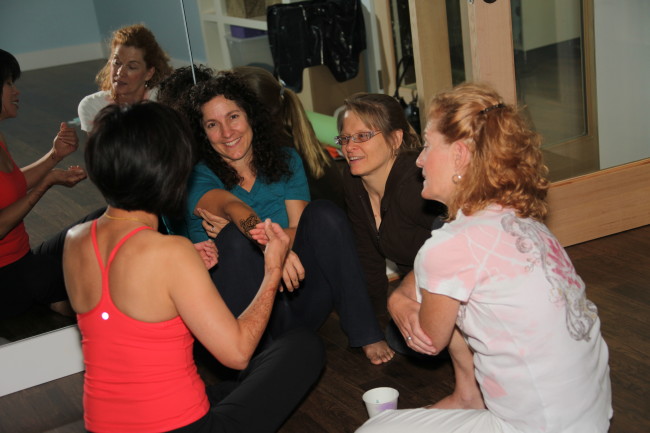Our FAQ answers the most common questions about our classes and how to prepare for classes. Please do not hesitate to contact us for additional information.
What is yoga?
The word yoga is often interpreted as “union” or a method of discipline. The Indian sage Patanjali is believed to have collated the practice of yoga into a collection of 195 statements that is known as the Yoga Sutra. Most people practicing yoga today are engaged in asana, one of the 8 limbs of yoga, which is a program of physical postures designed to purify the body and provide the physical strength and stamina required for long periods of meditation.
What is Aerial Yoga?
Aerial yoga is the practice of traditional Hatha yoga by using a low-hanging soft fabric hanmock that supports up to a 1000 lbs. With the weight of the body partially or fully supported along with the help of gravity and the fabric, we can explore and create space in our bodies as intended in traditional Yoga practice. More information can be found on our Aerial Yoga page.
What are the benefits of yoga?
With regular practice, you will notice your body getting stronger and more flexible; you will feel more grounded and have better posture. On a mental level you will notice improved focus, the ability to stay calm and maintain relaxed breathing.
Do I need to be flexible and strong?
It is a misunderstanding that you have to be flexible or strong to do yoga. We work on many levels including the body, the breath, the mind and the spirit in every class. You will find yourself becoming more flexible and strong as you continue to practice yoga.
What class should I try?
It is a good idea to try different classes to get an idea of the style of yoga and teachers you like and is right for you. Ashtanga, Power Flow, Aerial Yoga and Vinyasa classes tend to be the more physically demanding classes, while Gentle Yoga, Yin Yoga and the Restorative Yoga classes are less physically challenging.
What should I bring to class?
Bring water to stay hydrated, a yoga mat if you have one and a towel. We have mats available for rent if you do not have one. You may want to purchase your own mat for reasons of personal hygiene and regularity of practice.
What should I wear in class?
Athletic clothing where the instructor can have a good idea of your body alignment, and at the same time clothes that are comfortable, fast drying and do not restrict your movement.
What about eating or drinking before class?
It is a good idea to come to class hydrated and drink plenty of water after yoga class. In most yoga traditions drinking water during class is not recommended. Try not to eat a full meal at least three hours before class.
What if I have pain or a previous injury?
It is always appropriate to talk to the instructor about any existing physical conditions and concerns you have about them. Yoga benefits many people with chronic pain by helping the body regain its balance between strength and flexibility, movement and awareness. If you are under a doctor’s care for an acute situation, please be sure to discuss taking yoga classes with him or her.
Can pregnant women do yoga?
Yoga can be very beneficial during pregnancy, but make sure to let your instructor know you are pregnant. Make sure to avoid twisting, inversions, pranayama, any abdominal strengthening pose and lying on your belly. Remember, balancing poses may get tougher as you progress in your pregnancy so use the wall or blocks to keep yourself balanced and stay in the pose longer. Make sure to drink plenty of water and take bathroom breaks whenever needed.
Do I need to bring my mat for Aerial Yoga?
Yes, not all aerial yoga poses are done suspended on a fabric sling. Many of the Aerial Yoga poses are performed by using the fabric sling as a prop to aid in balancing, body alignment, stretching and muscle conditioning.
Who can practice Aerial Yoga?
Anyone between the ages of 15 to 70 in good health can practice aerial yoga. Please check with your doctor to make sure being inverted in any yoga pose is right for you.

